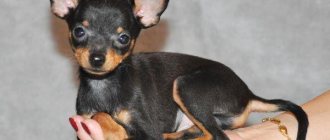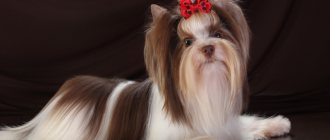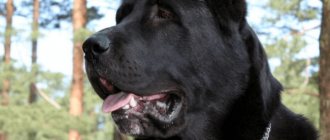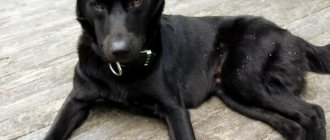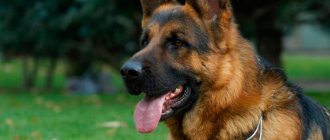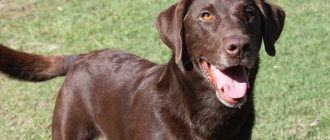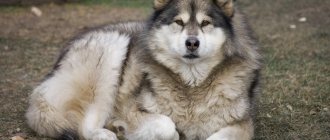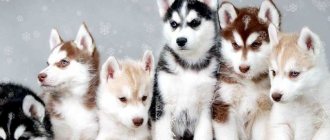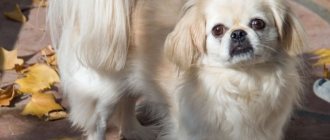The Toy Terrier is a decorative dog that has won the hearts of city residents.
Today, increasingly at social events, famous personalities appear in the company of these funny creatures.
Toy terriers are regaining the glory of salon dogs that originally belonged to them since the 18th century, when they were regulars in the living rooms of aristocrats.
The custom of keeping charming little ones in the house came to Russia along with the fashion for everything English.
The breed was bred in England for purely pragmatic purposes for hunting rats.
The attractive appearance and miniature size of terrier dogs appealed to noble people, and the dogs gradually turned into decorative ones.
Origin story
In Russia, toy terriers were very popular until the beginning of the 20th century. After the revolution, the breeding of such a “bourgeois” breed was not welcomed; there was no influx of new blood, as well as contacts with Western dog handlers.
At the end of the 50s, enthusiasts made an attempt to revive the breed, collecting its representatives bit by bit . The result of selection work was a new breed - the Russian Toy Terrier, which includes smooth-haired and long-haired varieties.
The breed standard was adopted in 1965.
The International Association of Cynologists officially registered the breed in 2006 under the name “Russian Toy”.
The Russian Toy and the English Toy Terrier have many differences; they are different breeds that have a common ancestor.
For an “Englishman”, according to the standard, only black and tan color is acceptable, while Russian Toys, in addition to the standard black, can be brown, chocolate, red, fawn and even blue and lilac.
Lilac and blue colors are obtained if the toy terrier genes contain a recessive, weakening color . This gene reduces the saturation of the shade of the coat, as if blurring it.
Black puppies with this gene are born grayish-blue, and brown puppies are born reddish-blue, called lilac.
Reviews
Yulia Sergeevna, 24 years old, Kostroma
I have always dreamed of a dog, and my dream was realized by a red toy terrier, whose photo I found on one of the sites with advertisements. Initially, I thought that after buying a toy terrier, I would definitely start training him, so that by the year he would begin to participate in my exhibition. My friend’s dog, although of a different breed, has already won many awards, and I, as they say, wanted to “wipe her nose” with her. From the very beginning, my charming red Toy Simochka seemed to me playful, affectionate, as if born for public performances. In the nursery where I had to go for Sima, he was in good conditions - the fur was smooth, clean, silky. At that time he was already 5 months old. It seemed to me that he was already too old for training.
As soon as I took Sima home, I immediately assigned him a place - on the rug in my bedroom. I bought him educational toys and walked him twice a day. But it seemed to me that he remained shy and was reluctant to meet other dogs. I haven’t thought about setting him up with a girl either, because I had a goal in front of me - to send Simochka to an exhibition for a cup. As a result, I managed to train him in six months. I watched training videos and did not resort to the help of professionals - I did everything myself. But the only thing I still haven’t been able to do is teach Sima to be more relaxed. Due to his shyness, he was unable to respond to the judges, and in the end we returned home without a cup. Despite this, he is still just a miracle! Quiet, calm, photogenic and loves me very much.
Denis Davydov, 21 years old, Nizhny Novgorod
All my life I dreamed of a dog, but my parents didn’t buy it for me, as is often the case in all families. That's why I picked up a kitten, who lives with me to this day, but after moving to a new apartment, my girlfriend and I got a dog - the smallest one, so that we could take it with us always and everywhere. We contacted the breeder on the Internet and came to look at our tiny beauty. We immediately named her Angelina, because the baby really was like a little angel. The pleasant reddish color of the coat immediately indicated that this was a real beauty.
I thought that the dogs should be taken in when they are still very young, so that they have time to get used to the new environment and owner. In addition, I heard that at a small age they are easier to train. This was my big mistake, because it turns out that puppies need to be taken away from their mother no earlier than two months of age, and Angelina was just over a month old at that time. We had to give her very small portions, milk and water through a syringe. If the baby ran around the apartment, it was like a nuclear war, but her strength quickly ran out and she fell asleep. One day my girlfriend took her to bed with us while we were watching TV - Angelina didn’t want to leave the bed anymore! She can still allow herself to jump, even if no one calls her, although she is already big, she is one and a half years old. During this time, we managed to teach her a lot, but she just doesn’t want to go to the litter box. If we don't take her for a walk in time, when we return home we find a large puddle. Unfortunately, we had to give Angelina away, but we still have the cat - it’s less of a hassle.
Daria Zakharovna, 63 years old, Bryansk
My daughter gave me a toy terrier for my sixtieth birthday. I live alone, and I needed to support someone, otherwise I would become completely sad when I retired. Dusya has become my salvation from melancholy: I happily knit toys and costumes for her, we go to the store together and I put her in a basket. Despite the fact that she is very small, she is smart and understands me well. She is completely unpretentious in nutrition and it seems to me that there is no sweeter creature in the world than my red-haired Dusya. There were difficulties only at the beginning, when we got used to each other, but now I don’t worry about anything. I’ve already had my eye on Doucet’s friend and am thinking about purchasing one. I'm sure they'll have more fun together.
Marriage or breed
Tribal marriage among the Toys includes:
- malocclusion (overbite or underbite);
- a significant number of white spots;
- white color;
- bald spots in smooth ones;
- lack of fringe on the ears of long-haired dogs;
- hanging ears (smooth-haired);
- short legs;
- aggressiveness;
- too tall, heavy weight.
According to the breed standard, the toy should be elegant and compact.
Main characteristics of the breed:
- squareness. The height at the withers is equal to the length of the body;
- high thin paws;
- small head. The transition from forehead to muzzle is clearly defined. The muzzle makes up one third of the skull.
- eyes are round, convex, large;
- the color of the nose, lips, eyelids depends on the color;
- ears are high-set, hanging (with fringe);
- the neck is graceful, slightly curved;
- back straight;
- chest deep;
- the tail is raised above the horizontal line (if not docked);
- The coat is short, shiny or long with feathering. The more the feathering contrasts with the length of the hair on the body and head, the better.
Expert opinion
Kozhevin Semyon Kirillovich
Expert dog handler.
For me, the Russian Toy is a small dog for big love. Ideal for home and apartment. He eats little and requires little space. She doesn't need expensive grooming. Very comfortable in everyday life. Like any terrier, it needs training. Any dog, regardless of size, must take an obedience course.
Suitable nicknames
It is easier for a dog to remember a nickname of 1-2 syllables with the letters - r or - s. If it already has a long name, a permanent abbreviation is needed.
Accustoming a puppy to a name begins from the day it arrives in the house. The nickname is clearly pronounced every time you contact the pet; if it begins to respond, the result is secured with a reward.
The choice of nickname is limited only by the owner’s imagination.
But it is recommended to check the dog’s reaction to the invented name.
Boys are often given serious boyish names like Agent, Bars, Cerberus, or they choose a name that suits their appearance and character (Ushastik, Milash, Lapka). You can use a funny, but not offensive or abusive word, like Marmot, Grumpy, Khomik, or refer to foreign or ancient names, names of cities and localities. For example, Voshi.
Girls are usually given beautiful names (Nicole, Flora, Ada, Nika,). Funny ones that take into account appearance or habits are suitable (Bullet, Sonya, Monya, Kotya, Motya).
The Toy Terrier is an excellent choice for lovers of small dog breeds.
Photos of lilac toy terrier colors
“Pink Ice” is a poetic name for the purple color of the toy.
Lilac and tan
The color is pinkish-brown with a blue or gray tint . The wool has a bluish, silver, gray-pink tint. The nose matches the color or is gray. Maybe with a tan mark.
Lilac with red
Red color with an unusual shade. The nose is light brown, gray, the eyes are light.
Isabella
The coat color is pinkish-cream with a blue or gray tint.
Gray slate nose, gray rather than black mask on the muzzle . The tint of the coat is bluish, silver or dirty pink.
There may be grey, pinkish-gray or bluish shading on the back and ears. Isabella does not have a tan.
Advantages and disadvantages
Before getting yourself a dog, it would be good to first become acquainted with the characteristics of the breed.
The advantages of these include:
- compactness and charm;
- the ability to take your pet on trips, to a restaurant, to a meeting;
- ease of maintenance in a city apartment;
- low maintenance requirements;
- devotion to the owner;
- high intelligence.
Minuses:
- high risk of injury due to the fragility of the skeleton;
- the need to buy clothes for the pet, since toys do not have an undercoat and are susceptible to hypothermia;
- excessive excitability and overactivity of animals, which, however, is regulated by correct and timely education;
- Dogs absolutely cannot stand loneliness and require constant attention. This is not a minus, but an important feature of the breed that you need to think about first;
- There is an opinion that the life expectancy of dogs with rare colors is not long.
Common features
All the main types of toy terriers have one thing in common - they are small decorative “pocket” dogs that are exclusively a companion and friend to humans. Suitable for living in warmth and comfort, at home.
IMPORTANT!
During the cold season, all tois must be worn when going outside.
Common features are also:
- thin slender legs;
- compact body with a strong and straight back;
- active, playful character;
- obedient animal, trainable, undemanding;
- loyal to the owner, can warn of danger;
- friendly, but can show aggression when strangers appear and are treated rudely;
- fragile, like all dwarf dogs, needs constant attention.
Distinctive features
Russian Toys are very active small decorative dogs.:
- Weight – up to 3 kg
- Height at withers – up to 28 cm
The dog is very lively, playful, jumping. Affectionate and loyal, always protects the owner. A funny creature that can give you many fun minutes.
Toys are overexcitable, which results in almost constant trembling. The lack of undercoat makes them susceptible to even mild cold. For walks in unfavorable times of the year, the animal needs warm clothes.
NOTE!
Toys are easily litter trained, so there is no need to be outside every day. But then the problem arises of releasing energy, which dogs have in abundance.
Despite its miniature size, the animal is not a toy; it must be handled, taught from an early age to the norms of behavior, so that both the pet and the owner can live comfortably.
Lilac Toys shed differently than puppies of classic colors . The puppies look moth-eaten. The experience of breeders suggests that the use of antifungal shampoos can improve the appearance of babies.
You should also include vitamins in your diet. In toys, the time of molting coincides with the transition period, the so-called immune pit, when there is a sharp drop in immunity.
But even if you do nothing, the molting will go away by itself, you just need to be patient and not panic in vain.
What to feed
Like many small dogs, Toy Terriers have a very sensitive gastrointestinal tract. The pancreas and liver are their weak points. Therefore, feeding fatty foods and foods high in carbohydrates is unacceptable. You cannot feed your dog food from the table. The use of ready-made dry food solves the problem of balanced nutrition for your pet.
Ready-made food is convenient to store and easy to take with you. You should choose premium and super premium food that is suitable for miniature dogs. The norms for the amount of food are always written on the packaging. The food already contains all the vitamins and minerals a dog needs and does not require additional additives.
With a natural diet, you can feed only freshly prepared food. In order to create the right menu for your pet and select the necessary mineral and vitamin complexes, it is better to consult with a veterinarian.
What can you feed your toy terrier:
- boiled lean meat - veal, chicken, turkey, rabbit. Sometimes you can indulge in raw. All fat layers should be cut out.
- cereals - buckwheat, rice, oatmeal
- Boiled yolk should be given once a week
- boiled sea fish without bones
- once every few days it is necessary to feed low-fat fermented milk products
- fruits and vegetables - both fresh and boiled, stewed. Toy terriers love cucumbers, beets, carrots, bananas, apples and pears.
Meat products and cereals account for 30% of the diet. For vegetables and fruits - 20-25%.
What you should not feed your toy terrier:
- fatty meat - puts a lot of stress on the liver and pancreas
- sweets - lead to damage to tooth enamel, can lead to the development of diabetes
- smoked meats, marinades, spices - can cause allergies, additional stress on the liver
- potatoes, grapes - leads to bloating
- milk is not digestible in the body of an adult dog
- bones - the dog can damage the teeth and digestive system organs
Your pet should always have a bowl of clean water available.
The frequency of feeding depends on the age of the dog. Up to 3 months, food should be five times a day, at 5 months - four times a day, at 6 months - three times a day. And from the age of 8 months they switch to two meals a day.
Life expectancy and health
Russian Toy Terriers live on average up to 10-15 years . Life expectancy often depends on the quality of the dog's care. Toys have a remarkable ability to quickly recover from illness.
To improve health you need:
- active walks in the fresh air. If the dog does not exercise enough, joint diseases may develop;
- warm clothes and shoes for the pet to prevent hypothermia;
- the need to remember the fragile structure of the toy. Jumping from heights should not be allowed;
- correct diet. Salt and spices, sausage and sweets should be prohibited. It is necessary to take care of vitamins. Do not overfeed;
- regular visits to the veterinarian.
They are not insured against eye diseases.
Most common:
- cataract.
- progressive retinal atrophy.
Neurological diseases are not uncommon for toys.
Diseases
The weakest points of toys are bones, teeth, digestive tract and eyes. Often they have to pull out baby teeth when the molars are already growing. These dogs also suffer from tartar, which causes tooth loss.
Small dogs often experience digestive disorders. These include diarrhea, the cause of which can be anything: allergies, poisoning, helminthiasis or infection. If diarrhea appears, the dog should not be fed all day; it only needs to be given water frequently. The next day you can feed with dietary products: boiled chicken, oatmeal. If your pet has bloody diarrhea or lethargy, you should immediately consult a veterinarian.
Health problems in toy dogs are often genetically determined. These include conjunctivitis. Your pet's eyes become watery and pus accumulates in them. The disease occurs against a background of weak immunity. Over time, small dogs develop vision problems. They may develop cataracts or retinal atrophy.
Toy terriers suffer from allergies. Dogs are allergic to certain foods, dander from other animals, dog cosmetics, or insect bites. It manifests itself with the following symptoms:
- the dog begins to carefully lick itself or rub against pieces of furniture, trying to relieve the itching;
- the skin peels off and dermatitis appears.
Allergies can be treated with antihistamines, but it is better to start treatment after consulting a doctor.
Toy owners note that toys often tremble all over their bodies. This is a physiological feature of the breed – an easily excitable nervous system. Dogs tremble when scared, when they want to go to the toilet, when they are lacking attention, or when they are cold. However, shaking can be a symptom of a serious illness, so you should contact your veterinarian to determine the cause of the fever. Over time, the dog owner can learn to determine why the pet is trembling.
If the dog was not purchased for breeding, it can be neutered. Castration will help avoid many problems:
- character becomes calmer;
- there will be no unpleasant smell from dog marks in the apartment;
- life expectancy increases;
- the risk of hormonal diseases is reduced.
If you provide dogs with good care, timely examinations and vaccinations, toy terriers live more than 20 years.
Basic rules of care
Caring for toys is easy. It can be expressed in two words - attention and love.
And in a little more detail, pets need:
- your permanent place in the house;
- balanced diet (ratio of meat, cereals, vegetables, fruits – 30: 35: 2 5: 10%);
- walks;
- combing;
- nail trimming (frequency – 1.5-2 months);
- bathing (once a month);
- taking care of the ears and eyes (clean and examine to avoid infection).
Interesting facts from the life of dogs
Animals have existed alongside people for more than 30 thousand years. During all this time, a special relationship has formed between humans and pets. But how much do we know about them?
Interesting facts that not everyone knows:
- Scientists have proven that the intelligence level of our pets corresponds to a two-year-old child.
- Dogs can discern human emotions better than other animals. A quick glance is enough for them to understand joy, sadness or anger. They can empathize and experience the same emotions as the owner.
- The breed's hearing is 10 times better than that of humans, and its sense of smell is 10 thousand.
Everyone has a choice about who to keep as a pet. Some people need exotic animals, ornamental pigs, snakes and other animals. But the dog still remains the leader in this place. A loyal, loving, protective four-legged friend will always be appreciated.
Read also: 10 dogs that are not suitable for children
Price range
The price range is quite wide - from 25 to 85 thousand rubles.
Price depends on:
- prices for puppy parents;
- cost of maintaining parents;
- veterinary services, quality vaccines;
- payment for mating;
- cost of parent exhibitions;
- efforts spent on raising a puppy;
- correctly executed documents.
How to choose a puppy
- Find a nursery with a good reputation.
- View the puppy's parents.
- At least 2.5 months of age is desirable.
- 2 vaccinations must be given (with a note in the veterinary passport).
- Bald areas of fur are not allowed.
- The baby should not be aggressive or lethargic.
- There should be no discharge from the nose or eyes (indicative of poor care).
- You need to make sure you have a pedigree.
The charm of the lilac toy, enhanced by the originality of its color, will evoke admiring glances from others and make its owner the center of attention of any society..
